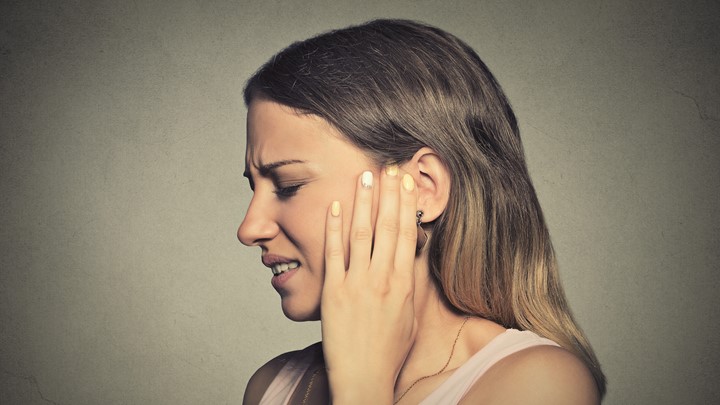Injuries to the eardrum
Causes, prevention, treatment
Ear diseases
The eardrum is located at the end of the auditory canal and is part of the middle ear. It is a very thin membrane, only 0.1 millimetres thick, which is partly responsible for the functioning of our hearing. If the eardrum is damaged by a tear (rupture) or a small hole (perforation), sound waves can only be transmitted to the inner ear to a limited extent. This is because the perfect transmission of sounds and tones is only possible via an intact eardrum. Dangerous: If the eardrum is injured, it can no longer perform its additional function as a protective barrier - germs can penetrate the ear unhindered.

This is how injuries to the eardrum manifest themselves
Injuries to the eardrum can occur gradually (for example, after a middle ear infection) or suddenly (for example, after using cotton swabs to clean the ear). A very loud noise or sound pressure can also damage the eardrum. The symptoms that affect people are very similar, regardless of the cause:
- Hearing is suddenly noticeably "muffled".
- Speech can hardly be perceived clearly and distinctly.
- Ambient sounds become blurred.
Only very rarely are both ears affected; most often, an ear drum injury only occurs on one side.
How do eardrum injuries happen?
- Patients who have recurrent middle ear infections often have problems with their eardrum. The eardrum is so badly affected by the inflammation around it that it ruptures more easily.
- If sharp or blunt objects such as twigs or cotton buds get into the ear canal, they can cause a hole in the eardrum.
- Changes in pressure - such as when diving, flying or in an explosion - can provoke a rupture of the eardrum. People who take a flight with a pronounced cold are particularly at risk. In these cases, the mechanism of pressure equalisation in the ear is disturbed because irritated, swollen mucous membranes close the Eustachian tubes (connections between the nasal cavity and the middle ear) and thus optimal ventilation of the middle ear is no longer guaranteed.
Is it possible to prevent eardrum injuries?
Often, eardrum injuries occur quite suddenly. The pain that can accompany a rupture is described as short and sharp. However, patients who suffer such a rupture during a middle ear infection often experience it as relief from the ear pain they had previously suffered.
To prevent damage to the eardrum, hearing protection should be a matter of course during noisy work that may also generate pressure waves. Likewise, pressure compensation should be considered if a flight is planned. If you have a cold, you should use a nasal spray to counteract the swelling of the eustachian tubes. For diving enthusiasts, it is advisable to have a medical fitness check carried out by a doctor before every diving holiday. As a general rule, cotton swabs should not be used for ear hygiene.
Diagnosis by the ENT doctor
If an injury to the eardrum is suspected, an ear, nose and throat doctor should be consulted. He or she will diagnose the cause of the symptoms. Using an otoscope (a device for examining and viewing the external auditory canal), the doctor can see what injuries are present on the eardrum. A healthy eardrum is grey, reflective and slightly translucent. It has a smooth surface and is easily movable. If there is an inflammation of the middle ear, characteristic signs of inflammation will be visible. The eardrum is then clearly reddened and bulges out.
To determine the degree of damage, the doctor will probably also perform a hearing test to check the hearing function.
How are injuries to the eardrum treated?
The eardrum's self-healing powers are enormous, and small tears usually heal well on their own. Hearing will not be affected. An eardrum perforation with frayed ends or detached rims, on the other hand, will be closely monitored by the ear, nose and throat specialist. Under no circumstances should water be allowed to run into the ear while it is healing, for example when taking a shower, as this could cause a bacterial infection.
If an injury to the eardrum has not healed after about four weeks, surgery may be necessary. One treatment option is to insert silicone sheeting to help the eardrum grow back together. The wafer-thin eardrum is splinted, so to speak. Another option is to reconstruct the eardrum. For this, the tear or hole in the eardrum is closed with the body's own tissue (fat/cartilage/connective tissue).
Sources:
https://www.apotheken-umschau.de/Ohren/Trommelfellverletzungen-Ursachen-12914_2.html
Discover other articles
- Smart Hearing: What intelligent hearing systems do
- The sooner an ENT specialist is consulted, the better
- Comfort to go: KINDvitalo
- Hearing loss and its causes
- Hearing aids while driving
- Optimized design for hearing solutions
- Meniere's disease
- Hearing test: Procedure and result
- Loud alone is not enough:
- Noise protection for the ears